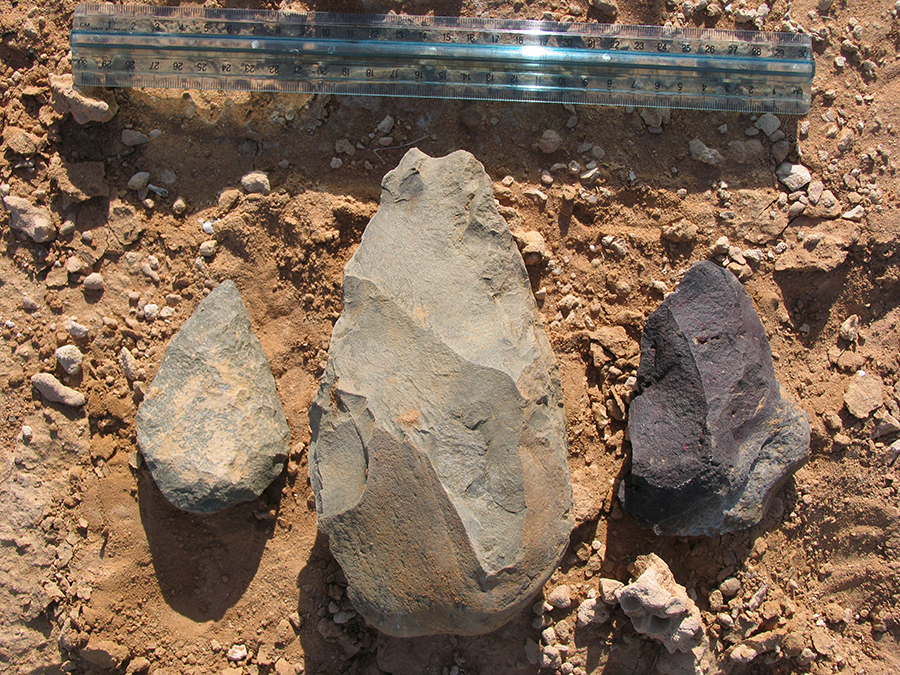Experimental work shows that they can be effective in butchering animals, cutting and stripping wood, processing plants, and digging. They can be a formidable weapon. This multiplicity of potential function has gained them the name the “Swiss-army knife of the stone age.” Research focused on the edge damage suggests that some of the younger in age, more regularly shaped hand axes, may have been mounted in slots and formed a hatchet-like tool. Some hand axes were made so they had a long broad cutting edge as opposed to a point—these are called cleavers. Both hand axes and cleavers are an excellent source of flakes, which makes them into a core. So, if you needed a flake with a fresh sharp edge, you could just knock one off on the fly (being careful not to destroy your hand axe).
In modern times, technology changes at a very fast pace, surging forward quickly often in synchrony across the world. It is inconceivable to us that technology does not charge forward with improvement every year. Not for the Acheulean. Technological change, at least in stone tools, changed at glacial speeds, so 100s of thousands of years saw no change at all. Measurable changes spanned half a million years. If we look at hand axes that date to 500,000 years ago, we may see some clear changes from the earlier periods. The hand axes are sometimes thinner, the edges are straighter, and they are made seemingly to a more regular pattern. Many flakes are removed to shape the hand axe. These display great skill, but not much in the way of innovation.
The Acheulean spanned an enormous time, and its spatial extent is equally impressive—from the tip of southern Africa, all across Africa, and spread across most of Eurasia. Hand axes were made on the raw materials found in each region—quartzite in southern Africa, obsidian in East Africa, flint in the Middle East and Europe, and so on. Most of the raw materials were easily accessible and local—rarely were raw materials exploited from more than 20 kilometers away. This suggests that there was little or no exchange of raw materials and perhaps also that the stone tools were made and used and discarded rather close to their point of manufacture.
Did Acheulean hominins make and use tools on other raw materials? Remember that time and preservation is a challenge—only under extraordinary circumstances will any organic materials survive from Acheulean times. There are Acheulean sites with good preservation of bone and those that shaped bone tools are absent, though there are some signs that bone was sometimes used as a tool without shaping it. This signals that perhaps bone tool technology had not developed. However, there are a few sites that preserve wood, due to really special preservation conditions. These sites show us that hominins near the end of the Acheulean made tools out of wood, even spears.
At around 960,000 years ago there is excellent evidence for the regular use of fire by Acheulean hominins. There are glimmers of evidence earlier than this, but so far it is inconclusive. That being said, we expect that a hominin who has ventured into colder environments would have controlled use of fire. The tool kit of an Acheulean hominin was the hand axe, stone tool flakes, probably wooden tools, and fire.


